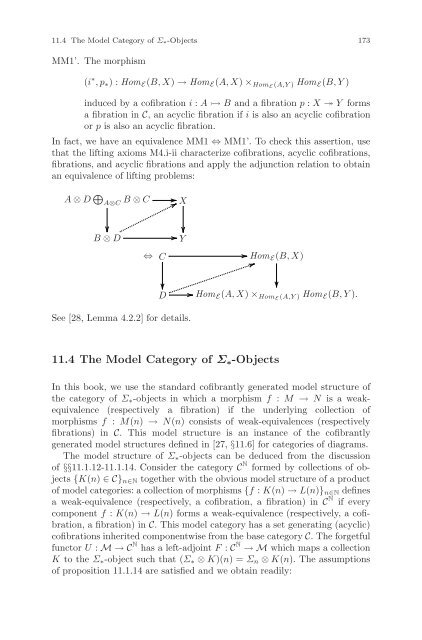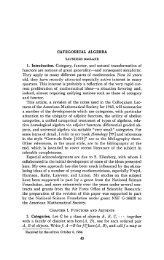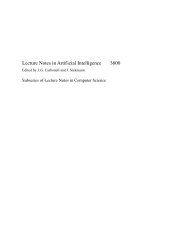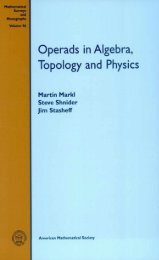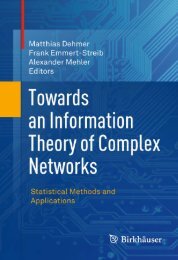Symmetric Monoidal Categories for Operads - Index of
Symmetric Monoidal Categories for Operads - Index of
Symmetric Monoidal Categories for Operads - Index of
Create successful ePaper yourself
Turn your PDF publications into a flip-book with our unique Google optimized e-Paper software.
11.4 The Model Category <strong>of</strong> Σ∗-Objects 173<br />
MM1’. The morphism<br />
(i ∗ ,p∗) :HomE(B,X) → HomE(A, X) × HomE (A,Y ) HomE(B,Y )<br />
induced by a c<strong>of</strong>ibration i : A ↣ B and a fibration p : X ↠ Y <strong>for</strong>ms<br />
a fibration in C, an acyclic fibration if i is also an acyclic c<strong>of</strong>ibration<br />
or p is also an acyclic fibration.<br />
In fact, we have an equivalence MM1 ⇔ MM1’. To check this assertion, use<br />
that the lifting axioms M4.i-ii characterize c<strong>of</strong>ibrations, acyclic c<strong>of</strong>ibrations,<br />
fibrations, and acyclic fibrations and apply the adjunction relation to obtain<br />
an equivalence <strong>of</strong> lifting problems:<br />
A ⊗ D �<br />
A⊗C B ⊗ C X<br />
B ⊗ D Y<br />
⇔ C HomE(B,X)<br />
D<br />
See [28, Lemma 4.2.2] <strong>for</strong> details.<br />
HomE(A, X) × HomE (A,Y ) HomE(B,Y ).<br />
11.4 The Model Category <strong>of</strong> Σ∗-Objects<br />
In this book, we use the standard c<strong>of</strong>ibrantly generated model structure <strong>of</strong><br />
the category <strong>of</strong> Σ∗-objects in which a morphism f : M → N is a weakequivalence<br />
(respectively a fibration) if the underlying collection <strong>of</strong><br />
morphisms f : M(n) → N(n) consists <strong>of</strong> weak-equivalences (respectively<br />
fibrations) in C. This model structure is an instance <strong>of</strong> the c<strong>of</strong>ibrantly<br />
generated model structures defined in [27, §11.6] <strong>for</strong> categories <strong>of</strong> diagrams.<br />
The model structure <strong>of</strong> Σ∗-objects can be deduced from the discussion<br />
<strong>of</strong> §§11.1.12-11.1.14. Consider the category C N <strong>for</strong>med by collections <strong>of</strong> objects<br />
{K(n) ∈C}n∈N together with the obvious model structure <strong>of</strong> a product<br />
<strong>of</strong> model categories: a collection <strong>of</strong> morphisms {f : K(n) → L(n)}n∈N defines<br />
a weak-equivalence (respectively, a c<strong>of</strong>ibration, a fibration) in C N if every<br />
component f : K(n) → L(n) <strong>for</strong>ms a weak-equivalence (respectively, a c<strong>of</strong>ibration,<br />
a fibration) in C. This model category has a set generating (acyclic)<br />
c<strong>of</strong>ibrations inherited componentwise from the base category C. The <strong>for</strong>getful<br />
functor U : M→C N has a left-adjoint F : C N →Mwhich maps a collection<br />
K to the Σ∗-object such that (Σ∗ ⊗ K)(n) =Σn ⊗ K(n). The assumptions<br />
<strong>of</strong> proposition 11.1.14 are satisfied and we obtain readily:


